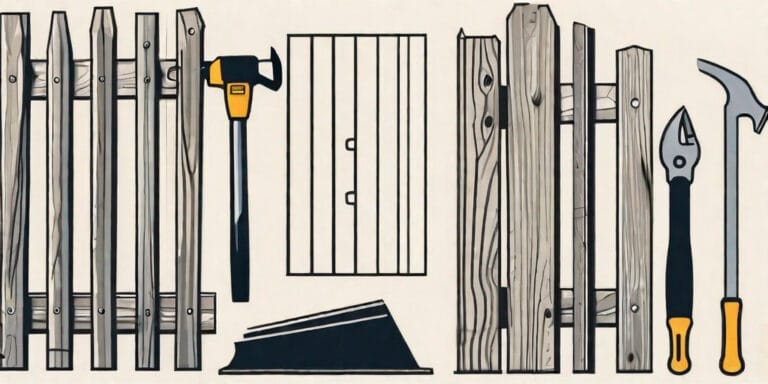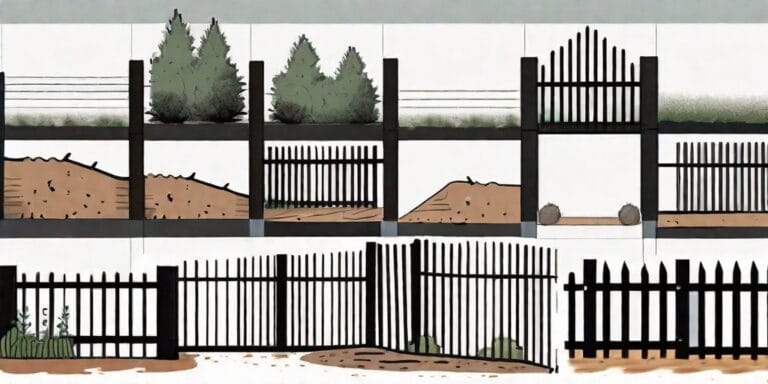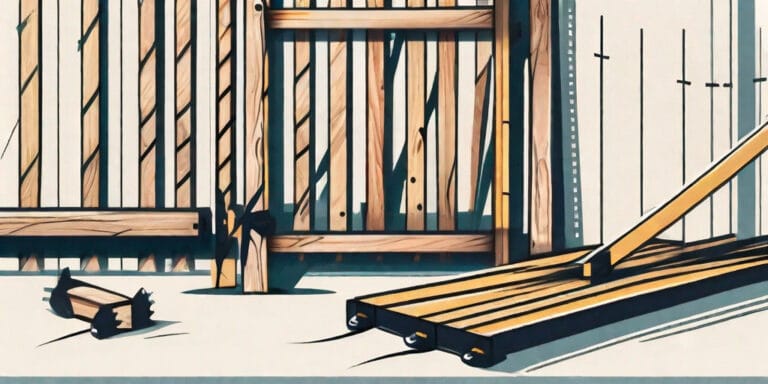How to Install a Pool Fence for Maximum Safety
A swimming pool can bring endless joy and relaxation to your life, but it also comes with a great responsibility – ensuring the safety of everyone around it. One of the most effective ways to enhance pool safety is by installing a pool fence. In this article, we will guide you through the process of installing a pool fence for maximum safety, discussing its importance, legal requirements, choosing the right fence, preparing for installation, step-by-step installation guide, and maintenance tips.
Understanding the Importance of a Pool Fence
When it comes to pool safety, a pool fence plays a crucial role. It acts as a barrier, preventing unsupervised access to the pool area, especially for young children and pets. The presence of a pool fence reduces the risk of accidental drowning incidents, which can occur within seconds, even in small bodies of water.
Accidental drowning is a leading cause of death for children under the age of five. The absence of a pool fence can significantly increase the likelihood of such tragic incidents. By installing a pool fence, you create a secure boundary that acts as a deterrent, keeping young children away from the water when they are not being supervised.
Not only does a pool fence provide physical protection, but it also serves as a visual reminder of the potential dangers associated with swimming pools. The presence of a fence can help instill a sense of caution and responsibility in both children and adults, encouraging them to be more mindful of pool safety.
The Role of a Pool Fence in Safety
A pool fence acts as a physical barrier, restricting access to the pool area. It serves as a deterrent, preventing unauthorized entry and keeping children and pets safe. Additionally, a pool fence can provide peace of mind to pool owners, knowing that they have taken a proactive step towards enhancing the safety of their pool.
When choosing a pool fence, there are various options available, including mesh, glass, aluminum, and wrought iron. Each material has its own unique features and benefits. For example, a mesh pool fence offers transparency, allowing for unobstructed views of the pool area. On the other hand, a glass pool fence provides a sleek and modern aesthetic while maintaining visibility.
Furthermore, pool fences can be customized to suit the specific needs and preferences of the pool owner. They can be designed to complement the overall landscape and architecture of the surrounding area, creating a cohesive and visually appealing outdoor space.
Legal Requirements for Pool Fencing
Before installing a pool fence, it is essential to familiarize yourself with the legal requirements in your area. Pool fencing regulations may vary by region, so it is crucial to research and comply with the specific rules and guidelines applicable to your location. These regulations typically cover factors such as fence height, gate requirements, and latching mechanisms.
Complying with the legal requirements ensures that your pool fence meets the necessary safety standards. It is important to note that failure to adhere to these regulations may result in penalties or fines. Therefore, it is advisable to consult with local authorities or pool safety experts to ensure that your pool fence meets all the necessary criteria.
Additionally, staying informed about the latest developments in pool safety regulations can help you maintain the effectiveness of your pool fence over time. As safety standards evolve, it is essential to stay up-to-date and make any necessary adjustments or upgrades to your pool fence to ensure continued compliance.
Choosing the Right Pool Fence
When it comes to selecting a pool fence, there are several factors to consider to ensure maximum safety and functionality for your specific needs. While the primary purpose of a pool fence is to provide a barrier between the pool and the surrounding area, it is important to choose a fence that not only meets safety requirements but also enhances the overall aesthetic appeal of your outdoor space.
Factors to Consider When Selecting a Pool Fence
First and foremost, one of the key factors to consider is the material of the fence. Common options include aluminum, steel, glass, and mesh. Each material has its own advantages and considerations related to maintenance, durability, and aesthetics. Aluminum fences, for example, are known for their durability and low maintenance requirements. They can be powder-coated to match your preference and are available in various styles. On the other hand, glass fences offer a modern and elegant look while providing unobstructed views of the pool. However, they do require regular cleaning to maintain their transparency. Mesh fences, on the other hand, are lightweight and transparent, ensuring both safety and visibility. They are easy to install and remove, making them a popular choice for temporary pool fencing.
Another crucial factor to consider is the style of the fence. There are various designs available, ranging from traditional picket fences to contemporary panels. It is important to choose a style that complements your outdoor space while providing the necessary safety features. The right style can add a touch of elegance and sophistication to your pool area, enhancing its overall appeal.
Furthermore, it is essential to ensure that the fence meets the height requirements set by local regulations. A taller fence offers greater security, as it becomes more difficult for children to climb over. Additionally, consider the spacing between the vertical bars or panels, as this can prevent small children from squeezing through. By adhering to these regulations, you can ensure the safety of your loved ones and minimize the risk of accidents.
Different Types of Pool Fences
1. Aluminum Fencing: Aluminum fences are a popular choice due to their durability and low maintenance requirements. They are available in various styles and can be powder-coated to match your preference. Whether you prefer a classic look or a more modern design, aluminum fences offer versatility and can be customized to suit your specific taste.
2. Glass Fencing: If you are looking for a fence that provides a seamless view of your pool while ensuring safety, glass fences are an excellent option. These fences offer a modern and elegant look, making them a popular choice among homeowners who want to create a sophisticated outdoor space. With unobstructed views of the pool, you can enjoy the beauty of your surroundings while keeping an eye on your loved ones.
3. Mesh Fencing: Mesh fences are lightweight and transparent, ensuring both safety and visibility. They are easy to install and remove, making them a popular choice for temporary pool fencing. Whether you are hosting a pool party or need a temporary solution during construction or renovation, mesh fences offer convenience and peace of mind.
By considering these factors and exploring the different types of pool fences available, you can make an informed decision that not only prioritizes safety but also enhances the overall aesthetics of your pool area. Remember, a well-chosen pool fence not only provides a secure environment but also adds value to your property.
Preparing for Pool Fence Installation
Before you begin the installation process, gather the necessary tools and materials required to complete the project efficiently.
Necessary Tools and Materials
- Tape measure
- Level
- Drill
- Screwdriver
- Concrete mix
- Anchor bolts
- Fence panels or sections
- Gates
Once you have all the tools and materials ready, you can proceed with measuring and marking your pool area.
Measuring and Marking Your Area
Start by using a tape measure to determine the dimensions of the pool area where the fence will be installed. Take accurate measurements of each side and mark them accordingly. This will help you determine the amount of fencing material required.
After measuring, mark the location of the fence posts and gates using stakes or spray paint. Ensure that the locations are compliant with the legal requirements and provide convenient access points.
Step-by-Step Guide to Pool Fence Installation
Now that you have prepared the area and have all the necessary tools and materials, you can proceed with the pool fence installation process. Follow these steps carefully to ensure a secure and durable fence.
Setting Up the Posts
Start by digging holes for the fence posts, ensuring that they are deep enough to provide stability. Place the posts at the marked locations and use a level to ensure they are plumb. Once in position, fill the holes with concrete mix to secure the posts. Allow sufficient time for the concrete to dry and set before proceeding.
Attaching the Fence
Once the posts are secure, begin attaching the fence panels or sections. Depending on the type of fence you have chosen, the attachment method may vary. Follow the manufacturer’s instructions for the specific fence you are installing. Ensure that the fence is level and securely fastened to the posts.
Installing the Gate
If your pool fence includes a gate, carefully install it following the manufacturer’s instructions. Ensure that the gate is self-closing and self-latching, as this is typically a legal requirement. Test the gate to ensure it opens and closes smoothly, and the latch securely engages.
Maintaining Your Pool Fence
After completing the installation, regular maintenance is essential to ensure the longevity and effectiveness of your pool fence.
Regular Inspection and Cleaning
Periodically inspect your pool fence for any signs of damage or wear. Check for loose screws, damaged panels, or bent posts. Additionally, clean the fence regularly to remove dirt, debris, and any chemical buildup.
Repairing and Replacing Damaged Parts
If you notice any damage, promptly repair or replace the affected parts to maintain the integrity of the fence. Contact a professional if extensive repairs are required or if you are unsure of the necessary steps.
By installing and maintaining a pool fence for maximum safety, you can create a secure environment for everyone enjoying your pool. Remember to comply with local regulations, choose a suitable fence, follow proper installation procedures, and perform regular maintenance. With these measures in place, you can enjoy peace of mind knowing that your pool area is safe and protected.







